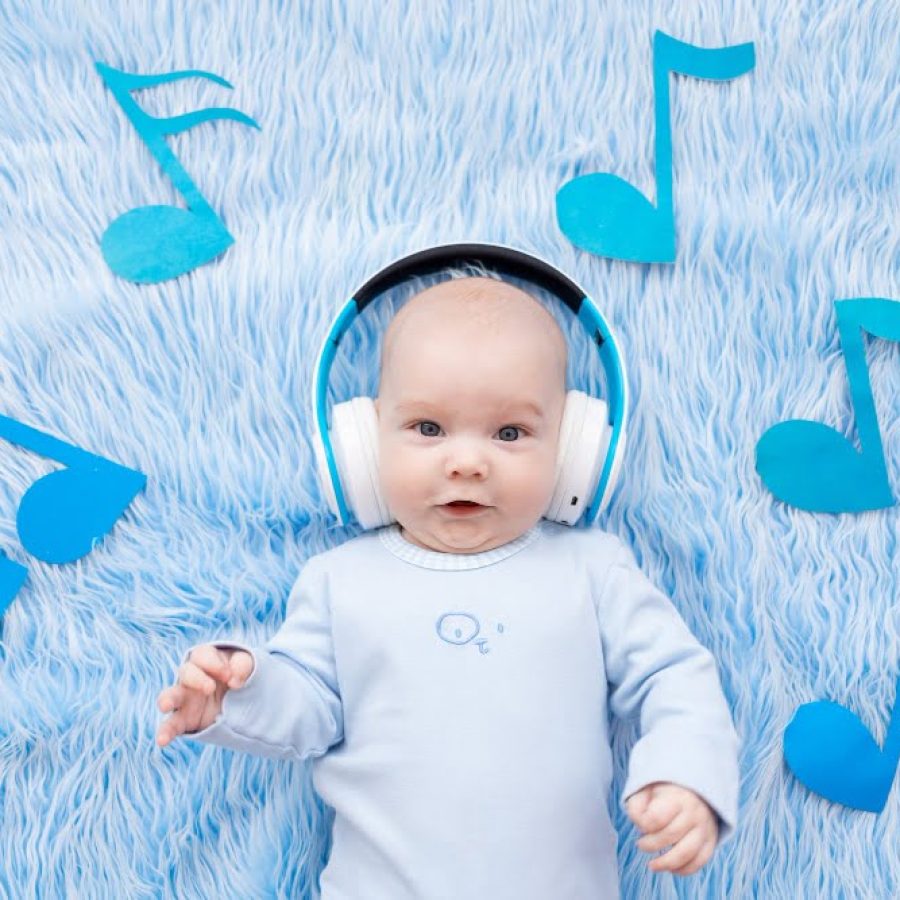Good sleeping habits are a necessary investment for everyone that wants to have a happier and healthier life. The same is true for those whose life has just started! Setting the right conditions for sleep also includes choosing the right sleep sounds for infants.
Let’s dive in into the topic and figure out how certain types of sounds can affect your baby’s nap time.
Sounds for Sleep: Does It Work On Infants?
When we think of sounds to help children fall asleep, we’ll eventually learn about white noise.
White noise is characterized as a type of sound that has equal intensity across all frequencies. One of its known effects is that it can help babies sleep by masking other undesired noises and creating a soothing environment.
Over the decades, parents have learned that white noise is an ally to bed time. Its sounds can reduce the time it takes for newborns to fall asleep as well as improve their sleep quality.
Are There Risks Of Relying On Sounds To Help Infants Sleep?
Just as any other topic around parenthood, you have to watch out for excesses. Be mindful to not rely entirely on white noise (or any sound, on that matter) to help your Little One fall asleep.
The reason for that is that white noise is not exactly a sound commonly heard in our daily lives. So leaning on this one resource could make your child have trouble falling asleep in places where they don’t have access to that asset – such as at the grandparents’ house.
As an overall recommendation, experts suggest that white noise is stopped after the baby is asleep, and its volume should be low – since this helps preserve the baby’s hearing system.
Creating The Perfect Sleep Environment
It’s worthless trying to dissociate the sleep environment from the full experience of actually falling asleep.
Meaning: you can’t expect an over-stimulated child to be able to fall asleep just because you need them to. It’s up to parents making sure the sleep stage is set for success.
Don’t overlook the importance of creating the appropriate sleep ambience for your baby. This is just as important as relying on resources like sleep sounds to help the child feel relaxed and finally rest.
Types of Sleep-Inducing Sounds
By now, you’re probably looking forward to having your Little One enjoy a good night of sleep.
Take a look at some variations of sleep-inducing sounds that can benefit both you and your child.
Recommended Sleep Sounds For Infants
- White noise: one of the reasons why white noise is so popular is that it can mimic the sound of the womb, which can make the baby feel safe and relaxed. Some examples of white noise are fans, air conditioners, and static.
- Lullabies: think of gentle songs that have a soothing melody and rhythm. Lullabies can also stimulate the baby’s brain development and language skills. Some examples of lullabies are “Brahms’ Lullaby”, “Hush, Little Baby”, and “You Are My Sunshine”.
- Pink noise: this is a sound that can create a more natural and balanced sound than white noise. Some examples of pink noise are rain, ocean waves, and wind.
- Heartbeat: this is a sound that has a rhythmic pulse that matches the baby’s own heartbeat. It can remind the baby of being inside the womb, where they could hear their mother’s heartbeat. Nowadays, you can easily find examples of heartbeat sounds in recordings, apps, or stuffed animals that play heartbeat sounds.
The right sleeping conditions are inarguably important. In fact, we have adapted our facilities to ensure that students can enjoy their nap time safely while they’re in daycare.
You’ve probably figured out that sleep sounds for infants can benefit the whole family. After all, if your baby’s peaceful and safe, you can also enjoy it!
You already learned how a good sleep schedule depends on routines and proper conditions. Keep that in mind and keep reading about how habits can be beneficial (and built) for your family!


